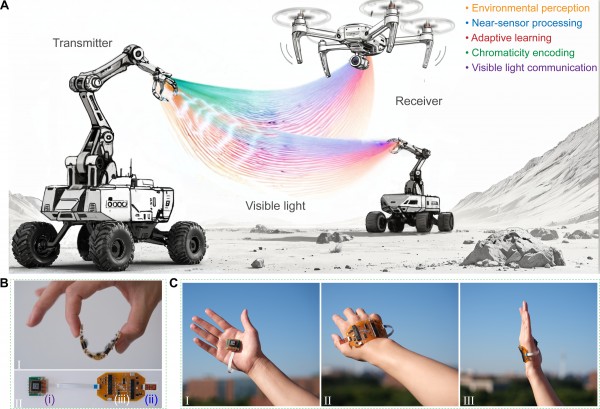Oxide semiconductor in a neuromorphic chromaticity communication loop for extreme environment exploration
- 저자
- Shangda Qu˚, Qianbo Yu˚, Chengpeng Jiang˚, Taoyu Zou˚, Honghuan Xu, Longlong Zhang, Mengze Tao, Qingshan Zhu, Song Zhang, Cong Geng, Mingjian Yuan,Yong-Young Noh*, Wentao Xu*
- 저널명
- Science Advances, 11, 20 (2025)
- 년도
- 2025
- Link
- http://10.1126/sciadv.adu3576 511회 연결
[Abstract]
Space exploration, particularly in the extreme space environment, has gained increasing attention. Networkedrobots capable of real-time environmental perception and autonomous collaboration offer a promising alternativefor executing complex precision tasks. Consequently, achieving local reliable communication and preparingirradiation- tolerant materials are essential. Here, we demonstrate a cephalopod-inspired neuromorphic loop thatenables chromaticity communication between individual near-sensor processing units. A programmatically alignedaluminum zinc oxide nanofiber array was fabricated and used as conductive channels that can withstand pro-longed (~10 4 seconds) and high- dose (~5 × 1015 ions per square centimeter) proton irradiation. The neuromorphicloop, with capabilities in environmental perception, event-driven processing, adaptive learning, and chromaticitycommunication, enables the self-driven collaboration of robotic hands based on tactile feedback and ensures reli-able mobile links for drone flight control. This work pioneers a direction in neuromorphic visible light communica-tion and marks important progress in the field of biomimetic intelligence
